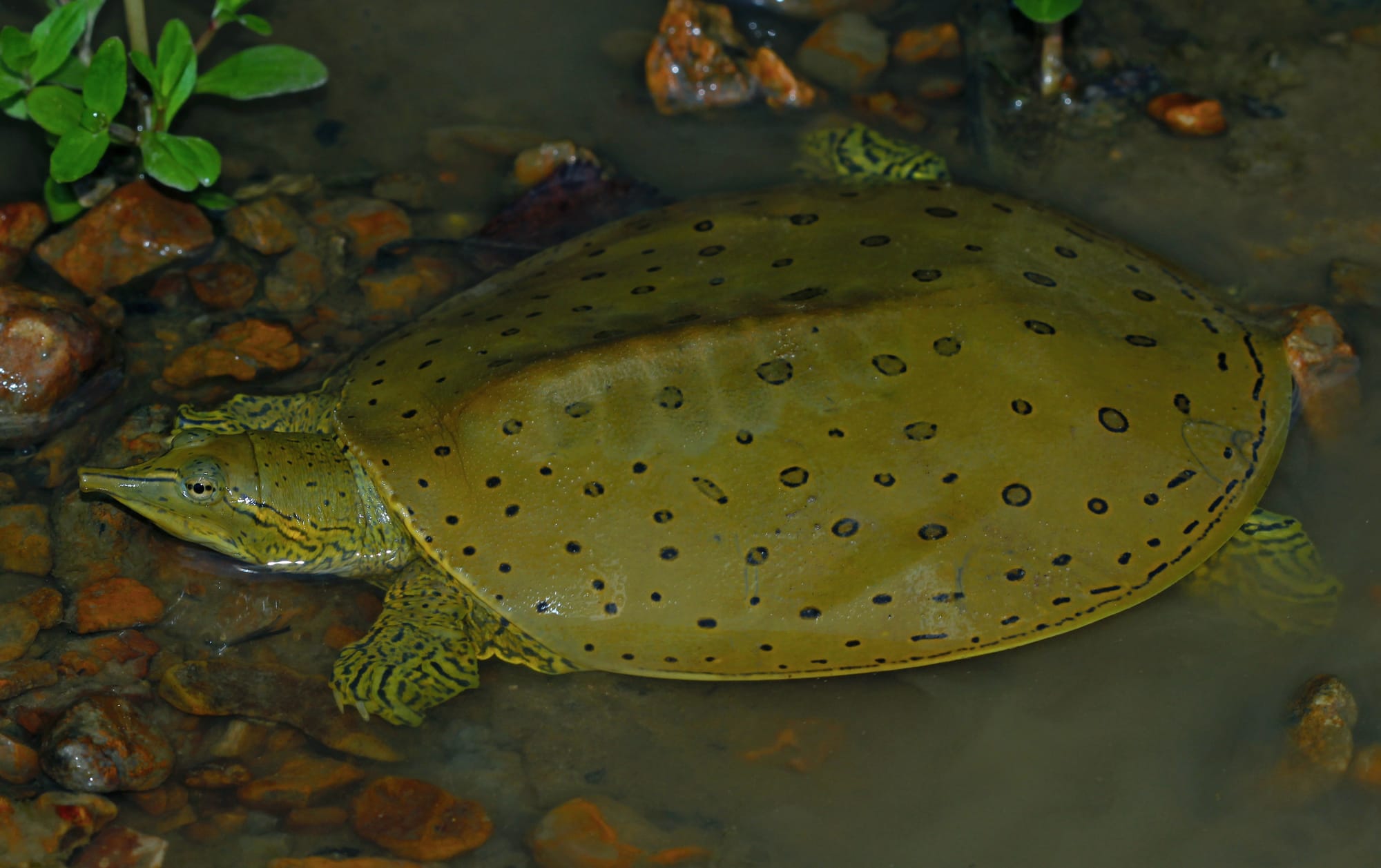Have you ever been lounging on the dock and caught a glimpse of what looks like a floating green pancake with a snorkel? No? Well, if you do, you may have just encountered one of Ontario's most peculiar animals, the Eastern Spiny Softshell Turtle.
This endangered species is unlike any other turtle you'll see at the cabin, and if you're lucky enough to spot one, you're in for a treat.
Not Your Average Turtle
Forget everything you know about turtles. While painted turtles sun themselves on logs across cottage country, the Spiny Softshell looks like nature got creative. This unusual reptile sports a few unique features and was named as Canada’s most evolutionarily distinct species by a recent SFU study. What a title!

- A flat, leathery shell instead of the hard shells we're used to
- A built-in snorkel (that distinctive pointy snout)
- Tiny spines along the front edge of its shell
- An impressive size – females can reach up to 54 cm, rivaling snapping turtles
Locals have given it nicknames like "pancake turtle" and "leatherback" (not to be confused with the sea turtle), and once you see one, you'll understand why.
Where You Might Spot Them

These turtles are endangered in Ontario, so sightings are rare and special. They're found only in southwestern Ontario:
- Thames and Sydenham Rivers – Home to most of Ontario's population
- Lake St. Clair and Lake Erie
- Western Lake Ontario watersheds
They prefer rivers with soft bottoms, sandy areas for nesting, and deep pools for hibernation. Some individuals travel up to 30 kilometers in a year between different parts of their home range.
Masters of Hide-and-Seek

They're not all looks - these unique turtles also have a few special talents. They can:
- Stay underwater for up to 5 hours (they absorb oxygen through their skin!)
- Bury themselves completely in sand or mud with just their snorkel showing
- Ambush prey like crayfish and molluscs from their hiding spots
- Hibernate underwater all winter without breathing
They're primarily aquatic and rarely venture far from water, using it for both hunting and hiding from predators.
What Cabin Owners Should Know
If you're fortunate enough to have softshells in your area, do your part to help protect them.
Boat Carefully
Softshells often hide in shallow waters where boats come to shore, and they regularly travel across open water. They're particularly vulnerable to boat propeller strikes.
Preserve Natural Beaches
Sandy or gravelly shorelines are scenic – and critical nesting habitat. If you own waterfront property, maintain natural beach areas above the waterline, especially from May to October when turtles nest.
Observe From a Distance
Never disturb nests, eggs, or turtles. While it's exciting to spot one, these endangered animals need space to thrive.
Report Sightings
If you see a Spiny Softshell, report it to the Natural Heritage Information Centre or the Ontario Reptile and Amphibian Atlas. Your observations help conservation efforts.
A Few More Facts About Ontario's Oddest Turtle
- They can live over 50 years in the wild
- Females take 12-15 years to mature in Canada's cooler climate
- Unlike most turtles, the gender of hatchlings isn't determined by temperature
- They're excellent swimmers and can make daily movements of 4-7 kilometers
- Eggs are sometimes targeted by poachers for the pet trade
Why They Need Our Help

The Spiny Softshell faces serious threats over habitat loss from shoreline development, boat strikes, disturbance of nesting sites by recreational activities, predation of nests by raccoons and foxes and getting caught in fishing gear.
The Bottom Line
The Spiny Softshell might look like a swimming pancake, but it's one of Ontario's most unique species. If you're out on your dock or boat this summer, keep an eye out for that distinctive snorkel poking above the water.

Seeing one is special – you're looking at an endangered species that's been around since before the dinosaurs disappeared. Let's make sure future generations of cottagers get the same chance to marvel at these remarkable creatures.
Up Close! Spiny Softshell Turtle | Video Duration: 3:21
Learn more about Ontario's species at risk and how to help at ontario.ca/page/species-risk






Join the Conversation